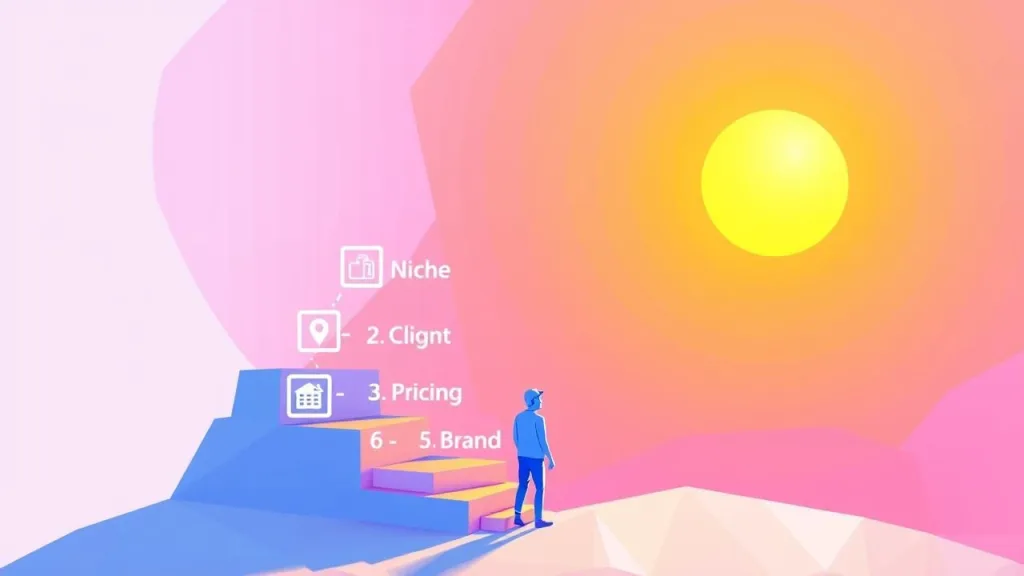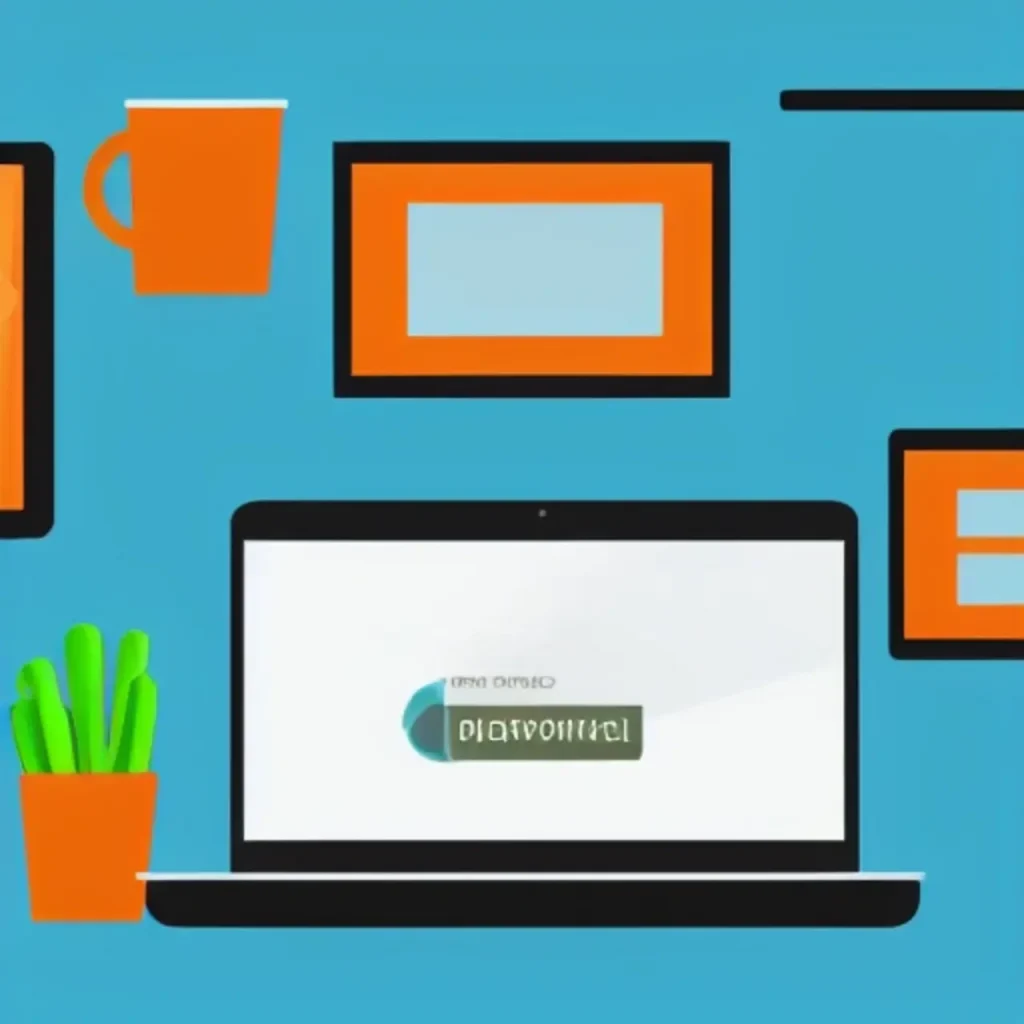Last Updated: October 2025
The leap into freelancing is exhilarating. You’re trading rush hour traffic and office politics for autonomy and the promise of unlimited potential. Yet, for many, that initial excitement is quickly replaced by a single, paralyzing question: “Where do I even start?” The sheer volume of advice can feel like drinking from a firehose. This is why understanding the real first steps to starting a freelance business is so crucial. It’s not about doing everything at once; it’s about doing the right things in the right order.
Forget the 50-point checklist for now. This guide is your roadmap for Day One. We’ve distilled the process into five foundational, sequential steps designed for the absolute beginner in the US and UK. Follow this path, and you’ll build the solid ground needed to launch a professional and profitable freelance career in 2025.
Step 1: Define Your Niche and Signature Service
This is the most critical strategic decision you’ll make, and it comes before anything else. You cannot be everything to everyone. The most successful freelancers are specialists, not generalists. A vague offer like “I’m a writer” gets lost in a sea of competition. A specific offer like “I write SEO-optimized blog posts for B2B SaaS companies” immediately stands out.
To find your niche, ask yourself three questions:
- What are you good at? (Your skills and expertise)
- What do you enjoy doing? (Your passion, which fuels longevity)
- What will people pay for? (Market demand)
Your niche lies at the intersection of these three answers. Once you have a niche, define a clear, signature service. This is your core offering—the one thing you want to become known for. It’s easier to market and sell one great solution than ten mediocre ones.
Step 2: Identify Your Ideal Client (Build Your Avatar)
Now that you know what you’re selling, you need to know who you’re selling to. Trying to market to “everyone” is a surefire way to connect with no one. Instead, create a detailed profile of your one ideal customer. This is your client avatar.
Give them a name and get specific:
Why is this so powerful? Because now you know exactly where to find your clients and what to say to them. Your marketing message shifts from “I build websites” to “I help yoga studio owners attract more students with easy-to-manage websites featuring seamless online booking.” It’s a direct solution to their specific problem.
Step 3: Handle the Foundational Business Setup
With your strategy in place, it’s time to make things official. This step legitimizes your operation and sets up the financial guardrails for success. While it can seem complex, the initial requirements are straightforward.
Choose Your Legal Structure (The Simple Start)
- For most beginners (US & UK): The simplest path is to start as a Sole Proprietor (US) or a Sole Trader (UK). This means you and the business are one and the same legally. It’s easy, cheap, and has minimal administrative requirements.
- When to upgrade: As you start earning more or taking on higher-risk projects, you can upgrade to a Limited Liability Company (LLC) in the US or a Limited Company in the UK to protect your personal assets.
For a complete breakdown of these structures, please see our detailed guide on how to set up your freelance business.
Open a Business Bank Account
This is a non-negotiable first step. Open a separate bank account dedicated solely to your business income and expenses. Do not use your personal checking account. This one action will save you from massive headaches at tax time and is essential for maintaining liability protection if you form an LLC or Limited Company.
Step 4: Set Your Prices with Confidence
Pricing is one of the biggest hurdles for new freelancers. The fear of being too expensive often leads to chronic undercharging, which is a fast track to burnout. Your price isn’t just a number; it’s a signal of your value.
- Don’t trade time for money (if you can avoid it). While hourly rates are a place to start, they penalize you for being efficient. As soon as possible, move to project-based pricing. Price the value and the outcome, not the hours it takes you.
- Calculate your target income. Work backward. How much do you want to earn annually? Add 30% for taxes and business expenses. Add vacation time. Divide that by the number of projects you can realistically complete. This gives you a baseline project rate.
- Offer 3 Tiers. A simple but effective strategy is to offer a good, better, and best package. This anchors your pricing and makes your preferred option (the middle one) look like the best value.
Rule of Thumb: If you’re sending out 10 proposals and 9 of them are accepted, your prices are too low. A healthy acceptance rate (around 30-50%) indicates you’re priced correctly for your perceived value.
Step 5: Create Your ‘Minimum Viable Brand’
You don’t need a fancy logo or a $5,000 website to get your first client. You just need to look professional and make it easy for people to see your work. This is your Minimum Viable Brand.
- A Professional Email Address: Ditch the `yourname1998@gmail.com`. For a few dollars a month, you can get a professional email like `yourname@yourbrand.com` through Google Workspace or a similar service.
- An Optimized LinkedIn Profile: Your headline should clearly state what you do and for whom (e.g., “Freelance Copywriter Helping Tech Startups with Conversion-Focused Website Copy”). Fill out the ‘About’ and ‘Featured’ sections.
- A Simple Portfolio: This doesn’t have to be a website at first. It can be a high-quality PDF you attach to emails, a shared Google Drive folder with your best work, or a profile on a platform like Behance (for designers) or Contently (for writers).
Conclusion: From Overwhelmed to Action
The journey to a successful freelance career is a marathon, not a sprint. By focusing on these five foundational first steps to starting a freelance business, you are building a launchpad for long-term success. You’ve moved from a vague idea to a focused strategy with a clear service, an ideal client, a legal and financial foundation, confident pricing, and a professional appearance. You have a business. Now, go find your first client.
FreelanceFin’s opinion: I spent my first six months as a ‘generalist’ and struggled. The moment I niched down and created my ‘Ideal Client Avatar,’ everything changed. My marketing became effortless because I knew exactly who I was talking to. Don’t skip Step 1 and 2—they are your business’s GPS. What’s the niche you’re considering? Share it in the comments!Frequently Asked Questions (FAQ)
Do I need a website on day one?
No. While a website is a valuable asset long-term, it’s not essential for getting your first client. A strong LinkedIn profile and a simple, high-quality PDF portfolio are often enough to get started. Focus on getting paid work first, then build your website with the profits.
How do I get my first client with no experience or portfolio?
Offer to do a small, defined project for a local business or non-profit at a reduced rate or even for free in exchange for a stellar testimonial and portfolio piece. This is a strategic investment to build social proof. You can also create self-initiated ‘mock’ projects to showcase your skills.
What is the most important first step of all?
Defining your niche and your specific service (Step 1). Without this clarity, every other step—from marketing to pricing—becomes significantly more difficult. Specializing is the fastest path to profitability and establishing yourself as an expert.
Should I register my business before I have any clients?
It’s a good idea to handle the basics, like registering as a Sole Trader (UK) or getting a free EIN (US) and opening a business bank account, as you begin marketing yourself. This ensures you’re ready to accept payments professionally and legally the moment your first client says ‘yes’.
References and Further Reading
Ordered list- Upwork: Freelance Forward 2022 Report.
- SBA.gov: How to Find a Business Niche (US).
- GOV.UK: Set up a business (UK).
- HubSpot: How to Create a Buyer Persona.
- FreshBooks: How to Price Your Services.
- LinkedIn: Optimize your Profile for freelance opportunities.
- Forbes: The Importance Of Niching Down As A Freelancer.
- NerdWallet: What Is a Sole Proprietorship?
- Startups.co.uk: What is a sole trader? (UK).




